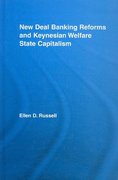Which of the following schools of thought believes that the free-market economy will NOT
automatically recover from a recession?
A classical
B new classical
C Keynesian
D monetarist
2.2 Which two schools of economists are regarded as heterodox economists?
A Austrian and post-Keynesian
B monetarist and neo-Keynesian
C classical and post-Keynesian
D Austrian and new classical [1]
According the Marxist theory of value, the value of a product is determined by the:
A ratio of labour to capital in the production process.
B number of hours of labour used to produce the product.
C marginal product of labour.
D quantity of capital plus quantity of labour employed.
Which of the following statements is correct in relation to the Austrian school of economic
thought?
The Austrian school:
A focuses on the role of uncertainty.
B believes that consumers always behave rationally and their preferences can be modelled.
C recommends greater regulation.
D believes that monetary policy can always be used successfully to reduce interest rates
resulting in full employment and low inflation
a. By an algebraic or probabilistic argument, verify the following backward recursion formula of an 11-year term insurance with a writ benet: Air-E = 0'3): _ U+1npx IIfawn + \"pr Aral-1511' b. Determine an appropriate starting value for use with this formula. c. Use your Illustrative Life Table with i = 0.06 to calculate the actuarial present value of a 10-year term insurance issued at ages 1' = 13, . . . , 130. a. Use recursion relation {g} at the end of Section 4.3 and your Illustrative Life Table to calculate (IAJES at i = 0.00. b. Modify the recursion relation of part (a) to obtain one for (Eh and deter- mine a starting value for it. c. Modify the recursion relation of part (b) to obtain one for (fflh and deter- mine a starting value for it. d. Make the recursion relations of parts {b} and {c} specic to the assumption of a uniform distribution of deaths over each year of age. Use your Illustrative Life Table to verify the numerical solutions to parts (a) and {b} of Example 4.2.4. [Hint Set B = 0.00 and A = 0.04 in your Makeham law parameters. 1' = 60'1\" 1. and use recursion formula {d} at the end of Section 4.3. Remember that the insurance in Example 4.2.4 is payable at the moment of death.] a. By an algebraic or probabilistic argument, verify the following backward recursion formula for the actuarial present value of a Luiit benet endow ment insurance to age 1; with the death benet payable at the moment of death: A = Alp + \"fir Ax+11':(x+1)| I = l}, 1, . . . , y 1. b. Determine an appropriate starting value for use with this formula. c. Use your Illustrative Life Table with the assumption of uniform distribu- tion of deaths over each year of age and i = 0.06 to calculate the actuarial present value of a unit benet endonent insurance to age 65 with the death benet payable at the moment of death for issue ages .r = 13, . . . , 64. d. By an algebraic or probabilistic argument. verify the following backward recursion formula for the actuarial present value of a unit benet nyear endowment insurance with the death benefit payable at the moment of death: Arm = Aim + U\" upr [1 UPI'I'H' _ Exit-1:5.) + pr Ax+ll x=0,1,...,w"1. Let Z be the present-value random variable for a 100,000 unit 20-year endow- ment insurance with the death benet payable at the moment of death. Use your Illustrative Life Table to calculate the mean and the variance of Z on the basis of a Makeham law with A = 0.001, B = 0.00001, c = 1.10, and 8 = 0.05







